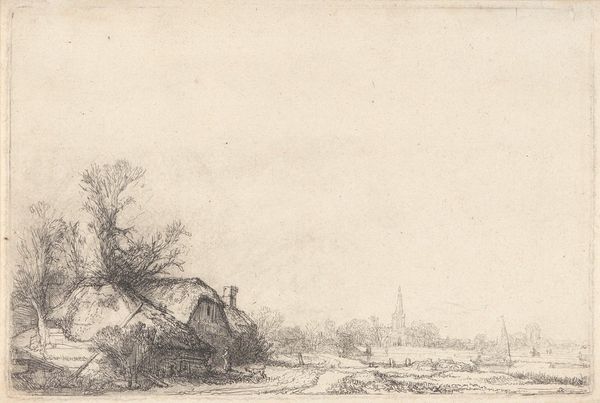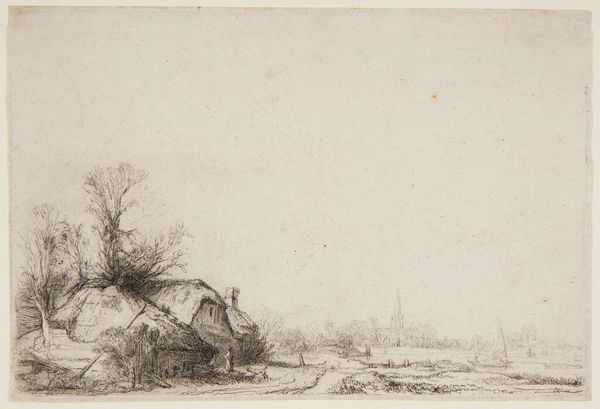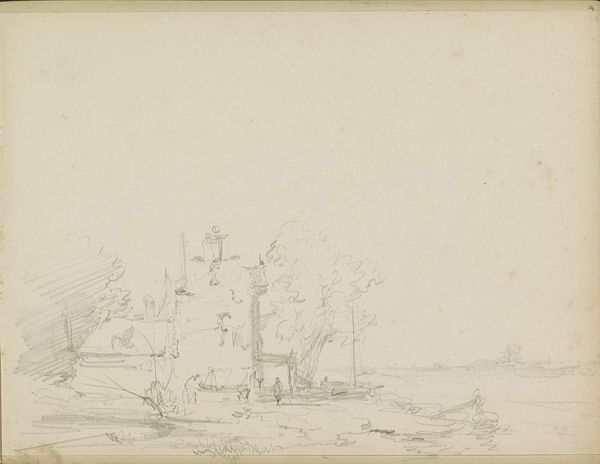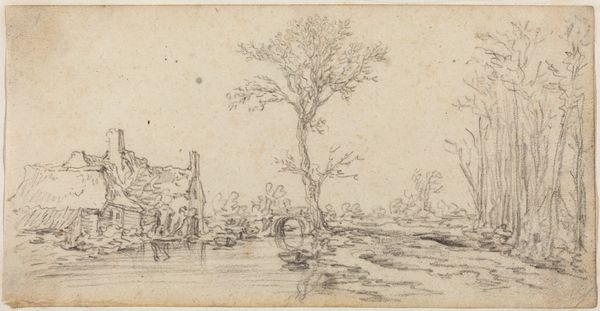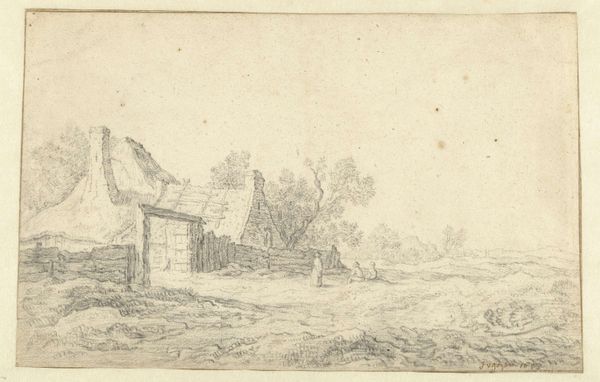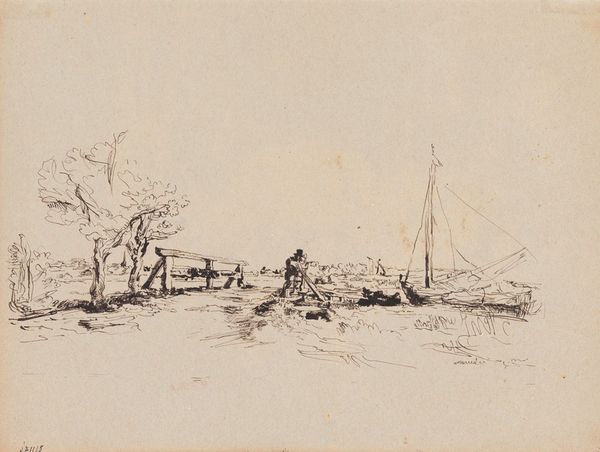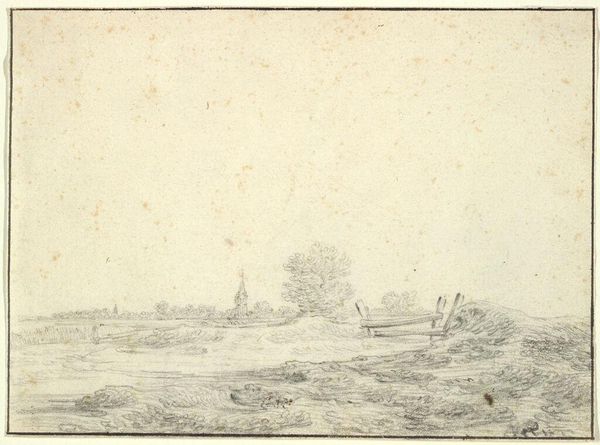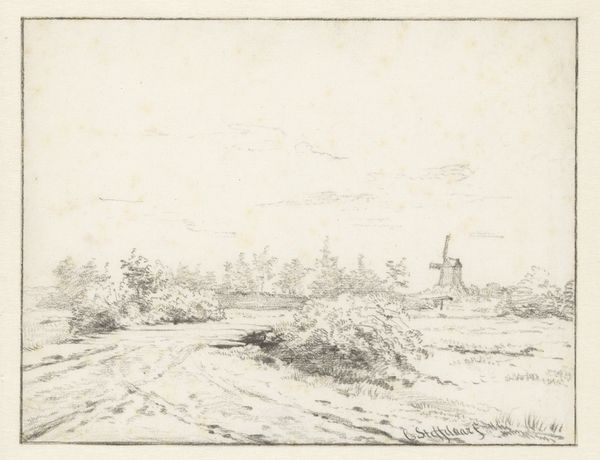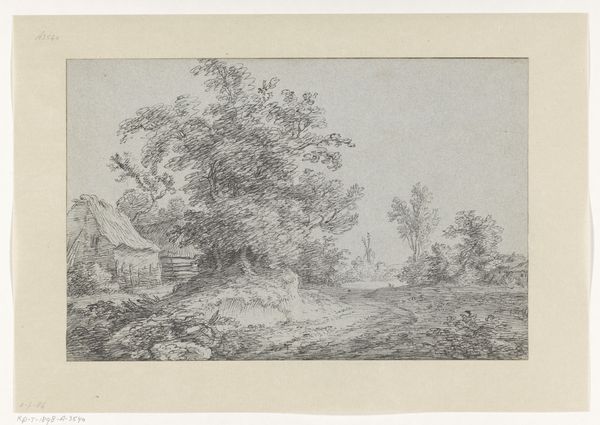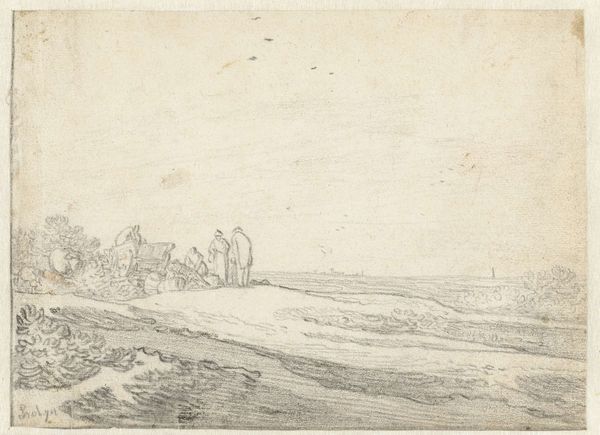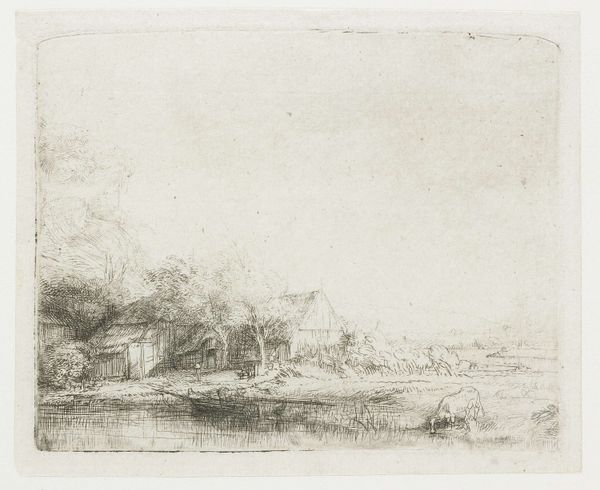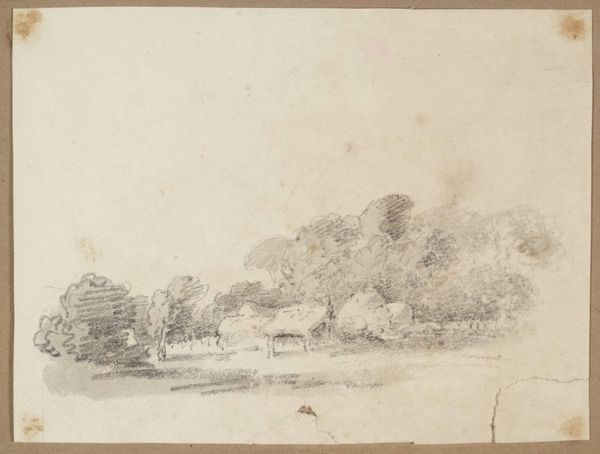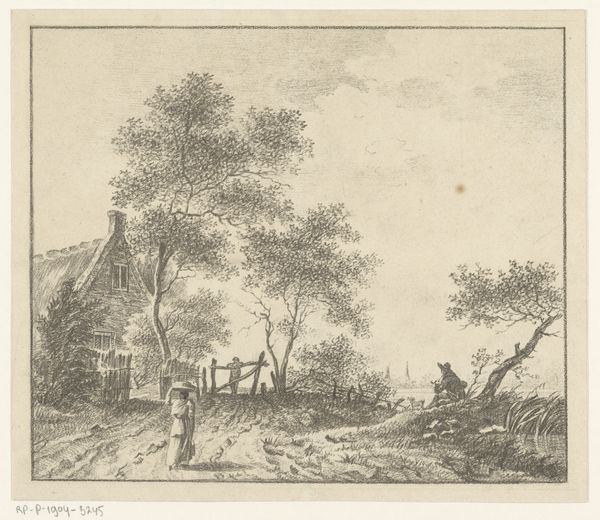
Cottage Beside a Canal with a View of Ouderkerk (counterproof) 1636 - 1646
0:00
0:00
drawing, print, etching, pencil
#
drawing
# print
#
etching
#
pencil sketch
#
landscape
#
etching
#
house
#
pencil
Copyright: Public Domain
Curator: Here we have Rembrandt van Rijn’s etching, "Cottage Beside a Canal with a View of Ouderkerk," created sometime between 1636 and 1646. It’s currently held in the collection of the Metropolitan Museum of Art. Editor: Immediately, I’m struck by the vast negative space above the buildings. The stark white nearly overshadows the detailed foreground; the delicate etching technique really emphasizes the textures in the cottage and trees. Curator: Rembrandt frequently returned to themes of domesticity and the Dutch landscape. Cottages like this often symbolized simple virtue and piety within Dutch society. The presence of Ouderkerk in the background—visible because of the church tower, I would posit—lends this humble abode a sacred dimension as the viewer, as well as those depicted, would be bound by similar codes of morality and social obligation. Editor: It’s the tension between precision and the almost frantic energy of the etched lines that captures my attention. See how the lines create the impression of movement even though it’s a still scene? And how it subtly uses contrasts of light and dark to articulate space with sparse lines? Curator: I would propose, then, that tension perhaps symbolizes a greater social reality: a culture steeped in sacred beliefs trying to grapple with the secular world that it had to actively create in order to successfully gain independence from Spain. Rembrandt often infused quiet scenes like these with undercurrents of this struggle between the sacred and profane as new Dutch norms were created, re-evaluating existing social roles and spiritual ideals. Editor: It almost presents as a study in contrasts, or rather a meditation on how contrasts establish form and emotional depth, without excess detail, achieving maximum expressiveness. I'm fascinated by his compositional control of light and shadow, or rather, his control of the light via shadow. Curator: Studying Rembrandt's art is akin to uncovering cultural memory itself, especially since so many people's social and political perspectives were rooted in symbolic language, in familiar settings with understated messaging that only certain audiences would be sensitive to. Editor: The economy of lines combined with textural detail makes this work unforgettable, the power is subtle yet pervasive and continues to challenge and inspire contemporary etchers, graphic designers, and typographers to find similar efficiency in simplicity.
Comments
No comments
Be the first to comment and join the conversation on the ultimate creative platform.
